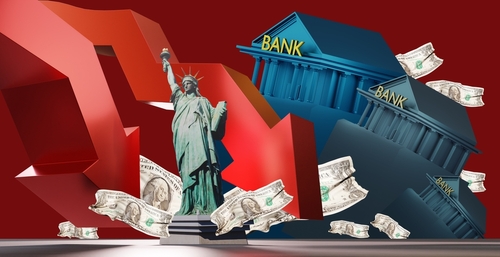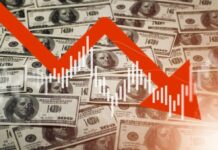
Americans are grappling with unprecedented levels of credit card debt, which reached a staggering $1.14 trillion at the end of June 2024. This marks a $27 billion increase from the previous quarter, according to a report by the New York Federal Reserve.
The spike in debt is primarily driven by inflation, which has significantly increased the cost of everyday necessities. As a result, many Americans are relying more on credit cards to cover their expenses. This has led to a concerning rise in credit card delinquencies, which hit 9.1% in June, up from 8.5% in the previous quarter.
48% of American adults have credit card debt, which is more than 100 million people. The average American has $6,501 in credit card debt, and the total credit card debt in the United States is $1.13 trillion
Govmnt didn't want you to run.Cheaper Africa.
~ Ramsey Solutions(2024) pic.twitter.com/RKFhyokNaK— Random World Ψ (@randomworldke) May 15, 2024
Compounding the issue is the record-high average annual percentage rate (APR) on credit cards, which recently soared to 20.73%, surpassing the previous high of 19% set in July 1991. This high interest rate exacerbates the financial burden on those carrying credit card debt, as it significantly increases the cost of borrowing.
If an average American owes $5,000 on their credit card at the current APR, it would take approximately 279 months and $8,124 in interest to pay off the debt by making minimum payments. This long-term financial strain highlights the severe impact of high interest rates on American households.
In Trump's America 🇺🇸 American's didn't have record high credit card debt due to inflation and real wage declines 📉 pic.twitter.com/Hw9kOd9561
— Gimme3Steps (@TheSouthGAJohn) August 7, 2024
The rise in credit card debt is part of a broader increase in total household debt, which reached $17.8 trillion at the end of the second quarter of 2024. This includes significant increases in auto loan balances, which grew by $10 billion to $1.62 trillion, and mortgage balances, which rose by $77 billion to $12.51 trillion.
Despite the Federal Reserve's aggressive interest rate hikes aimed at curbing inflation, the cost of living remains high. Inflation has cooled somewhat, but as of June, it was still up 3% compared to the same time last year. This persistent inflation continues to squeeze household budgets, particularly impacting low-income Americans who spend a larger portion of their income on essentials like food and rent.
The financial pressures have led to an increase in bankruptcies, with 136,000 consumers adding bankruptcy notations to their credit reports in the second quarter of 2024. This is up from the previous quarter, though overall bankruptcy rates remain low.
The economic landscape remains challenging for many, with inflation outpacing wage growth in most U.S. cities. As high prices and climbing interest rates test borrowers' ability to repay their debts, concerns about the broader economic impact continue to grow.











